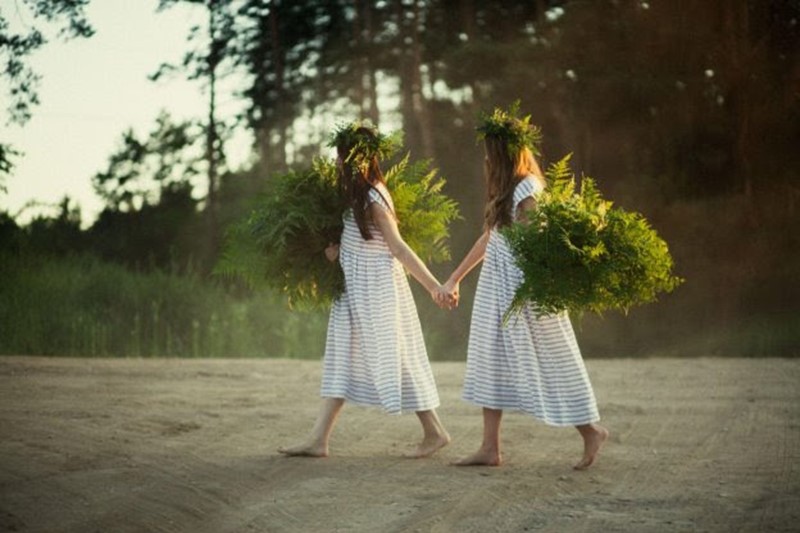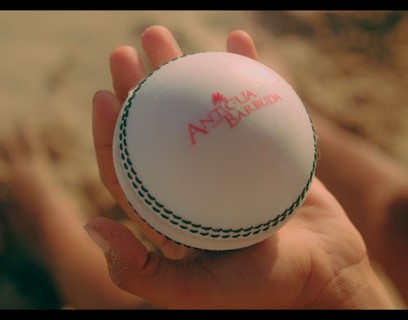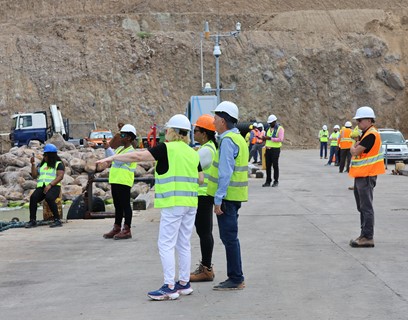
The evening of the 23rd of June is a special day for Lithuanians. St. John’s Day — locally known as Joninės — is a midsummer festival filled with pagan rituals of prosperity and Christian feast traditions. Even before religious conversion, a celebration of the summer solstice involves jumping over a bonfire for health, going on a fern flower hunt in the woods, or weaving wreaths of flowers for love.
Originally dubbed Rasos, the midsummer celebration had deep ties to the worship of nature and the elements while the rituals had been thought to bring bountiful harvests. With the arrival of Christianity, the name was changed to Joninės after the Feast of Saint John the Baptist.
Today, the festival is a blend of both religions, thanks to the efforts of national identity movements and the drive to revive old pagan traditions.
The true character of Lithuania revealed through rituals
Visitors willing to grasp the essence of Lithuania’s character may join locals, often dubbed the Italians of the North for their warmth, in recreating the magic of the traditional rituals of Joninės. The midsummer festival also marks the shortest night of the year, despite a surprising amount of memorable activities packed into it.
The quest for the legendary fern blossom is the most significant and intriguing custom of the solstice. The fern supposedly blooms at midnight, and anybody who finds its mythical flower will earn immense power, comprehend all of nature’s mysteries, gain the ability to read minds, see what is unseen, and achieve prosperity and enduring pleasure.
Another important rite of Joninės is the lighting of the bonfire. At dusk, the locals stoke a tall bonfire on a high hill and let it burn all throughout the night. The brighter its flames, the more plentiful the harvest is expected. And to ensure good health and purge all of their sins, Lithuanians jump over the bonfire, making it a special Joninės experience.
Given that the midsummer solstice is surrounded by customs and rites, unmarried women tend to weave a wreath of nine or twelve various herbs which is a magical charm said to allure one’s true love. If two garlands touch each other after being cast into a lake, marriage is expected in the coming year.
Connecting the national heritage with modern festivities
Today Joninės is celebrated all over the country with the largest festivities held in Kernavė, the first capital of the Grand Duchy of Lithuania. The town’s five hillfort mounds depict some of Lithuania’s most important historical landmarks, which transform into the realm of spells, feasts, and nature on the solstice night.
Not steering far from the old-time traditions, Lithuanians hold Joninės’ festivities by the Baltic sea, which radiates a source of pagan magic through its turbulent waters. The residents of the seaside village of Nida, nestled in the Curonian Spit peninsula, fill vast sand dunes with the sounds of folk music in celebration of all living beings and line the streets with traditional craft workshops.
Kaunas, Lithuania’s second-largest city and the current European Capital of Culture, will be reimagining Joninės with a blend of modern and ritualistic performances at the Šančiai Festival. It will transport the festivities into a former gunpowder warehouse turned cultural center P.A.R.A.K.A.S, where visitors will be invited to experience a surprising opera of imagery and watch a performance of ice and fire.
An immersive midsummer experience in nature
Many locals opt to celebrate Joninės in rural areas surrounded by majestic woods and glimmering lakes where they seek a more intimate connection with nature and mystical energy far from the loud crowds.
One of the more popular options is the Gervių giesmė homestead, a 5-hectare compound that lies in the midst of the ancient Kazlų Rūda forest, built in the style of a traditional archaic village. The nearby Novaraistis Nature Reserve is teeming with life in all forms, with cranes often paying a visit by circling high above the homestead and capturing the awe of its inhabitants.
Those who want to feel one with the earth and nature during the midsummer night can delve even deeper into the wilderness and seek solitude at the Forest Domes in the Kuosinė village sand quarry, immersed in the dark green foliage of the surrounding forests. Three glass domes built from the foot to the top of a hill open expanse views of nature and pagan worship inspiration centuries ago.
At the same time modern travelers do not have to go far to connect with the Lithuanian past as Apple Island harkens back to a time when the dukes of nearby towns Molėtai and Utena would gather to worship the divine power of the sun under hundreds of blooming apple trees. Meanwhile, weary of the night full of festivities, visitors of Pušelė campsite can wrap themselves in the water by taking a midnight swim in a crystal-clear lake Vištytis.


